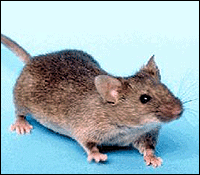CMDCMiracle
심혈관 대사질환센터
Cardiovascular and Metabolic Disease Center
Mitochondrial Research Affinity Collaboration-Laboratories & Engineering
0
Cardiovascular and Metabolic Disease Center
Mitochondrial Research Affinity Collaboration-Laboratories & Engineering
Home
> 0
Mouse Study Shows Gene Therapy Provides Temporary Protection from Radiation
- 작성자한진
- 작성일2006-08-13 14:14:45
- 조회수2415

Total406개
[ page21/28 ]
| No. | 제목 | 작성자 | 작성일 | 조회수 |
|---|---|---|---|---|
| 106 | 염재범선생님 논문이 출판되었습니다. (6) 2005.12.08 | 한진 | 2005.12.08 | 2,052 |
| 105 | 축하드립니다. 김태호 샘 (5)첨부파일 2005.11.11 | 주현 | 2005.11.11 | 1,745 |
| 104 | 2005년 박사후연수과정지원사업 최종선정과제 공고 및 협약체결 안내 (4) 2005.11.10 | 한진 | 2005.11.10 | 2,017 |
| 103 | 축하합니다. 강성현, 김현주 선생님!! (6)첨부파일 2005.11.02 | 한진 | 2005.11.02 | 1,983 |
| 102 | 주현교수님, 전공 관련!! (5) 2005.10.28 | 한진 | 2005.10.28 | 1,952 |
| 101 | 바로 아래 (3)첨부파일 2005.10.26 | 한진 | 2005.10.26 | 1,757 |
| 100 | DNA 이중나선, 왜 갑자기 방향 바꿀까? (7)첨부파일 2005.10.26 | 한진 | 2005.10.26 | 3,267 |
| 99 | "인지질의 세포 활성화 메커니즘 규명" 호원경 서울대 교수 등 국내 연구진 개가 (1) 2005.10.19 | 주현 | 2005.10.19 | 2,312 |
| 98 | "최강 IT에 BT실력까지…한국 미래 밝다" (1) 2005.10.17 | 김태호 | 2005.10.17 | 1,864 |
| 97 | "ITㆍBT융합에 한국미래 달렸다" (1) 2005.10.17 | 김태호 | 2005.10.17 | 1,916 |
| 96 | 고속전자동 단백질 이차원 전기영동(電気泳動) 시스템 (1) 2005.10.14 | 김태호 | 2005.10.14 | 3,074 |
| 95 | 미토콘드리아가 관여하는 세포 사멸 경로 규명 (2)첨부파일 2005.10.13 | 한진 | 2005.10.13 | 2,124 |
| 94 | 미토콘드리아가 관여하는 세포 사멸 경로 규명 (1) 2005.10.11 | 김태호 | 2005.10.11 | 3,088 |
| 93 | 한진교수님 수상소식 과총소식란에 게재 (2)첨부파일 2005.09.29 | 김태호 | 2005.09.29 | 1,953 |
| 92 | 한진교수님 국제신문 금일 기사입니다. (7)첨부파일 2005.09.28 | 주현 | 2005.09.28 | 1,987 |



